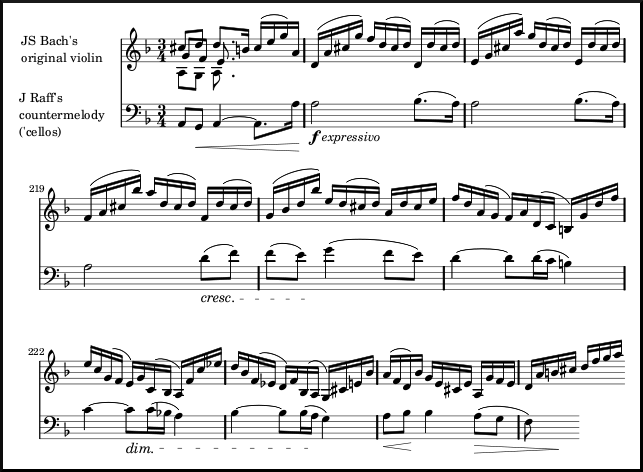I can hear the question now: What kind of guy puts The Iliad and War and Peace on a list of things to read for fun? Well, me. I think that reading things by authors I ve never read before, people that take positions I haven t heard of before or don t agree with, or works that are challenging, will teach me something. And learning is fun.
My
entire list for 2010 is at Goodreads. I ve highlighted a few below. I don t expect to read all 34 books on the Goodreads list necessarily, but there is the chance.
The Iliad by Homer, 750BC, trans. by Alexander Pope, 704 pages. A recent
NPR story kindled my interest in this work. I m looking forward to it.
The Oxford History of the Classical World by Boardman, Griffin, and Murray, 1986, 882 pages. It covers ancient Greece and Rome up through the fall of the Roman empire.
The Fires of Heaven (Wheel of Time #5) by Robert Jordan, 1994, 912 pages. I ve read books 1 through 4 already, and would like to continue on the series.
War and Peace by Lev Leo Nikolayevich Tolstoy, 1869, 1392 pages. Been on my list for way too long. Time to get to it. Haven t read anything by Tolstoy before.
The Politics of Jesus by John Howard Yoder, 1972, 2nd ed., 270 pages. Aims to dispel the notion of Jesus as apolitical.
An Intimate History of Humanity by Theodore Zeldin, 1996, 496 pages. Picked this up at Powell s in Portland on a whim, and it s about time I get to it.
The Myth of a Christian Nation: How the Quest for Political Power Is Destroying the Church by Gregory A. Boyd, 2007, 224 pages. An argument that the American evangelical church allowed itself to be co-opted by the political right (and some on the left) and argues this is harmful to the church. Also challenges the notion that America ever was a Christian nation.
Daily Life in Ancient Rome: The People and the City at the Height of the Empire, by Jerome Carcopino, 2003, 368 pages. I ve always been fascinated with how things were on the ground rather than at the perspective of generals and kings, and this promises to be interesting.
Slavery, Sabbath, War, and Women: Case Issues in Biblical Interpretation (Conrad Grebel Lectures) by Willard M. Swartley, 1983, 368 pages. Looking at how people have argued from different Biblical perspectives about various issues over the years.
To the Lighthouse by Virginia Woolf, 1927, 252 pages. I can t believe I ve never read Woolf before. Yet another one I m really looking forward to.
Tales of the Jazz Age by F. Scott Fitzgerald, 1922, 319 pages. Per Goodreads: This book of five confessional essays from the 1930s follows Fitzgerald and his wife Zelda from the height of their celebrity as the darlings of the 1920s to years of rapid decline leading to the self-proclaimed Crack Up in 1936.
Ulysses by James Joyce, 1922 (1961 unabridged version), 783 pages.
The Future of Faith by Harvey Cox, 2009, 256 pages. Per Goodreads, Cox explains why Christian beliefs and dogma are giving way to new grassroots movements rooted in social justice and spiritual experience. Heard about this one in an
interview with Diane Rehm.
Being There by Jerzy Kosi ski, 1970, 128 pages.
Jesus: Uncovering the Life, Teachings, and Relevance of a Religious Revolutionary by Marcus Borg, 2006, 352 pages. Whether or not you agree with Borg, this has got to be a thought-provoking title.
The Three Musketeers by Alexandre Dumas, 1844, 640 pages.
The Book of Tea by Kakuzo Okakura, 1906, 154 pages. Per Goodreads: In 1906 in turn-of-the century Boston, a small, esoteric book about tea was written with the intention of being read aloud in the famous salon of Isabella Gardner. It was authored by Okakura Kakuzo, a Japanese philosopher, art expert, and curator. Little known at the time, Kakuzo would emerge as one of the great thinkers of the early 20th century, a genius who was insightful, witty and greatly responsible for bridging Western and Eastern cultures. Nearly a century later, Kakuzo s The Book of Tea is still beloved the world over. Interwoven with a rich history of tea and its place in Japanese society is poignant commentary on Eastern culture and our ongoing fascination with it, as well as illuminating essays on art, spirituality, poetry, and more.
More of my list is
at Goodreads.
 For the second time, I chose an iMac as a computer at work. I like a lot
its simplicity. Only one cable, few options, a big screen and that's all.
The other manufacturer where it is easy to order has a complex offer. Is
the computer for playing ? for the office ? at home or in a company ? A
public one, a private one ?
I nervously installed Debian as soon as the machine arrived. What if it did
not work, would I have to use OS X for the next three or four years ?
Luckily, everything went well, and the
procedure is much simpler than it looks:
install rEFIt, shrink the system partition
with
diskutil,
add two partitions for Debian and its virtual memory with Disk
Utility, and restart on the
Squeeze installation CD-ROM, be
guided by the installer, make sure to install the GRUB on the Debian
partition, not on the master boot record. Just in case I would suddenly
need it, I also installed the proprietary ATI
drivers, that provide graphical
acceleration.
I then installed Grid
Engine, to take the best out of the hyper-threaded four cores of the processor. The
For the second time, I chose an iMac as a computer at work. I like a lot
its simplicity. Only one cable, few options, a big screen and that's all.
The other manufacturer where it is easy to order has a complex offer. Is
the computer for playing ? for the office ? at home or in a company ? A
public one, a private one ?
I nervously installed Debian as soon as the machine arrived. What if it did
not work, would I have to use OS X for the next three or four years ?
Luckily, everything went well, and the
procedure is much simpler than it looks:
install rEFIt, shrink the system partition
with
diskutil,
add two partitions for Debian and its virtual memory with Disk
Utility, and restart on the
Squeeze installation CD-ROM, be
guided by the installer, make sure to install the GRUB on the Debian
partition, not on the master boot record. Just in case I would suddenly
need it, I also installed the proprietary ATI
drivers, that provide graphical
acceleration.
I then installed Grid
Engine, to take the best out of the hyper-threaded four cores of the processor. The  After hearing several times, that it would make sense to use fibre cables
for your
After hearing several times, that it would make sense to use fibre cables
for your  Sometimes,
Sometimes, 

 Two kids, their really busy mother and my paid job leave me without much time
to blog or do Debian related work lately (well, at least on my free time,
I do Debian related things at work, but mostly as a user, not as a developer).
Anyway, a couple of weeks ago I decided it was time to upgrade my home servers
to Squeeze and I did it, but it was harder than expected.
At home I'm using two old laptops as servers, an old Aluminium PowerBook and
an Asus EeePC; the Asus was installed to replace an older PowerBook (a really
old one, BTW) that I was using as home server since my father gave it to me.
The plan was to use
Two kids, their really busy mother and my paid job leave me without much time
to blog or do Debian related work lately (well, at least on my free time,
I do Debian related things at work, but mostly as a user, not as a developer).
Anyway, a couple of weeks ago I decided it was time to upgrade my home servers
to Squeeze and I did it, but it was harder than expected.
At home I'm using two old laptops as servers, an old Aluminium PowerBook and
an Asus EeePC; the Asus was installed to replace an older PowerBook (a really
old one, BTW) that I was using as home server since my father gave it to me.
The plan was to use  Steve Jobs is a name that comes up a lot when talking to businesspeople, especially in the technology industry. His ideas, his background, his companies, their products, and his personal style are intertwined in the folklore of tech. I have no idea whether most of it is fiction or not, and I write this with apologies to Mr. Jobs for using him as shorthand. I have never met him, and my point here has nothing to do with him personally.
What I want to discuss is the behavior of people who invoke the myth of Steve Jobs. In my (entirely subjective) experience, it seems to me that there is a pattern which comes up again and again: People seem to want to discuss and emulate the worst of his alleged qualities.
Jobs
Steve Jobs is a name that comes up a lot when talking to businesspeople, especially in the technology industry. His ideas, his background, his companies, their products, and his personal style are intertwined in the folklore of tech. I have no idea whether most of it is fiction or not, and I write this with apologies to Mr. Jobs for using him as shorthand. I have never met him, and my point here has nothing to do with him personally.
What I want to discuss is the behavior of people who invoke the myth of Steve Jobs. In my (entirely subjective) experience, it seems to me that there is a pattern which comes up again and again: People seem to want to discuss and emulate the worst of his alleged qualities.
Jobs  On January 30, 1998, Wired.com
On January 30, 1998, Wired.com 
 Weeks ago, I was at a TravelWatchSW meeting in Taunton for
Weeks ago, I was at a TravelWatchSW meeting in Taunton for  I'm working on some ideas for finance or news software that deliberately
updates infrequently, so it doesn't reward me for checking or reloading it
constantly. I came up with the name "microhertz" to describe the idea. (1
microhertz once every eleven and a half days.)
As usual when I think of a project name, I did some DNS searches.
Unfortunately "microhertz.com" is not available (but "microhertz.org" is).
Then I went off on a tangent and got curious about which other SI units are
available as domain names.
This was the perfect opportunity to try
I'm working on some ideas for finance or news software that deliberately
updates infrequently, so it doesn't reward me for checking or reloading it
constantly. I came up with the name "microhertz" to describe the idea. (1
microhertz once every eleven and a half days.)
As usual when I think of a project name, I did some DNS searches.
Unfortunately "microhertz.com" is not available (but "microhertz.org" is).
Then I went off on a tangent and got curious about which other SI units are
available as domain names.
This was the perfect opportunity to try  Biggest, in terms of money involved, piece of equipment is a nice piece of glass to put in front of our camera.
Since my wife had been using a Canon SLR since forever (and we stayed with that when moving from the
Biggest, in terms of money involved, piece of equipment is a nice piece of glass to put in front of our camera.
Since my wife had been using a Canon SLR since forever (and we stayed with that when moving from the 

 Today was the season opener for
Today was the season opener for  Earlier today I stumbled across a recording of a work I had not heard in a few years by the obscure Swiss-German composer
Earlier today I stumbled across a recording of a work I had not heard in a few years by the obscure Swiss-German composer 